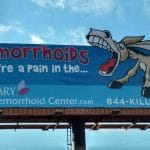The days of traditional marketing are long gone. Welcome to the age of algorithms and user experience. With the emergence of mobile technology, niche social networks and media websites, the way people access and digest information is vastly different – even the average attention span is shorter than a goldfish now. These shifting behaviors have created unique opportunities and challenges for businesses to reach their target audiences, causing the role of digital marketing to evolve and become an integral part of an organization’s marketing strategy.

Integrated PESO Model – Credit: Gini Dietrich, author of Spin Sucks
Digital marketing itself is multi-faceted and nuanced in nature with a lot of moving parts. The PESO model (pictured above) highlights the components of paid, earned, shared, and owned media, and it demonstrates how each area could overlap in order to deliver integrated marketing campaigns and extend reach and influence.
Before diving into the waters of online marketing, it’s important to consider the steps of a campaign and which channels work for your business.
1. Planning
No marketing campaign would be successful without the initial planning phase. Whether you’re a B2B or B2C business, there are several key pieces of information you must identify before launching your new marketing initiative. Ask yourself these questions:
- What is your main goal? The more specific, the better. Define your metrics for success.
- Who is your target audience? Every business is unique, including the clients or customers you’re attempting to attract. You wouldn’t craft a message the same way for a 60-year-old CEO of a global tech company as you would a 21-year-old college student.
- What is your competition? Conduct competitor research to know what’s being done in your industry and identify opportunities.
- What are your options for reaching your audience? Organic search? Facebook? LinkedIn? Instagram? Snapchat? Google Adwords? Email marketing? Display advertising? Blogging? Websites? You get the point. There are a plethora of ways to get your message to your audience, but you need to consider which outlets your target audiences are using.
- What is your actual message? What information are you trying to convey to your audience? Consider the actions and feelings you want to evoke and have users associate with your company or brand.
- How much will it cost? Organic reach is wonderful, but you cannot rely solely on it. Depending on your needs and goals, there are multiple paid advertising outlets such as Google Adwords or sponsored social posts where you can craft your own budget; however, keywords and targets in different markets have varying costs.
2. Strategy
Once you have all of the answers from the planning phase, you’re able to move forward and form a marketing strategy that works for your business. Depending on the size of your budget, you will be able to make educated decisions on how to best achieve your goals and maximize your return on investment (ROI).
Through creativity, brand voice and research, you’ll be able to create or formulate the tactics that will resonate with your audience.
3. Implementation
According to Jonathan Perelman, VP of Agency Strategy at BuzzFeed: “Content is king, distribution is queen, and she wears the pants.” Even if you’ve created the most clever or game-changing message or strategy in the world, it will fall flat if it doesn’t reach your target audience. Pay attention to the details of your campaign here in order to ensure success.
4. Analysis
Remember those goals and metrics for success in step one? One of the most attractive things about digital marketing is that you get to measure your ROI and see what channels and messages are most effective. This is where you can to decide if your campaign was successful or how you can improve in the future. You’ll even learn more about your target audience, like what messages and calls-to-action resonate with them.
5. Repeat
Marketing your business is an ongoing endeavor. Each marketing campaign you launch will teach you more and more about how to connect with your audiences and finesse your marketing goals.



